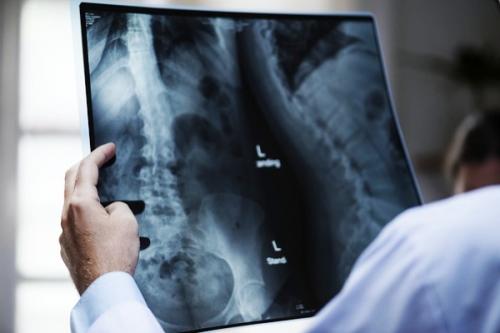Osteomyelitis of the Jaw
Osteomyelitis
A bone infection is referred to as osteomyelitis. In children, bone infections commonly occur in the long bones of the arms and legs. In adults, they usually develop in hips, spine, or feet. If bone infections are not properly treated, they can leave a bone permanently damaged. In children, osteomyelitis tends to be acute due to blood infection; and in adults, sub-acute or chronic osteomyelitis is more common, after an injury or trauma such as a fractured bone.
Osteomyelitis of the Jaw
Most commonly osteomyelitis affects the bones of the extremities such as spine, and pelvis due to invasion of bacteria or fungi. It rarely affects the temporomandibular joint (TMJ), but when it occurs, it may result in serious problems with the bones of the face and the jaw.
Usually, the infection is the result of poor oral hygiene or oral surgery, such as a root canal treatment. It may also occur due to a jaw fracture. Osteomyelitis in the jaw occurs commonly in the mandible (lower jaw bone) area than in the maxilla (upper jaw) area. People with diabetes or other diseases that impact the immune system are at a greater risk of developing this condition. The condition can cause severe jaw bone infection.
The body sends white blood cells to the sight of infection, to heal the infected bone; however, constant presence of white blood cells near the infected bone actually causes the bone to break down. As a result the infection restricts the blood flow and may cause bone death ("necrosis"). Radiation therapy delivered in particularly different bone cancer stages for the treatment of bone cancer or any other type of cancer for that matter may also induce the risk of bone infection. Osteoporosis and Paget's disease may also increase the risk of osteomyelitis of the jaw.
Signs and Symptoms
During osteomyelitis, one may experience increasing, constant jaw pain because of the S movement of the jaw. If you are suffering from chronic osteomyelitis, you may have jaw and neck stiffness, and difficulty with eating and talking.
Common signs and symptoms of Osteomyelitis of the jaw:
- Fever
- Jaw pain
- Facial swelling
- Jaw stiffness
- Tooth loss
- Pus discharge (thick, usually yellow-white fluid)
- A bump on the bone of the jaw
- Fatigue
- Headaches or neck ache
Diagnosis of osteomyelitis
A series of blood tests may be recommended to check for elevated white blood cell counts. Bone changes and inflammation may be observed in medical images of the jaw such as: x-ray, ultrasound, CT, or MRI.
Your physician may prescribe antibiotics to clear up the pain and infection. Generally, there is a difficulty in opening the mouth due to tissue damaged by the inflammation. In these cases, physical therapy helps to restore motion and decrease pain in the affected area. The physical therapist may help to restore the normal motion and mobility of the jaw. It reduces pain and help gain the ability to speak and eat by maintaining oral hygiene.
Treatments for osteomyelitis
Osteomyelitis treatment depends on age and general health, severity of the infection, etc. A doctor may use several options to treat your bone infection. He or she may ask you to take antibiotics to treat your bone infection. Antibiotics may be administered intravenously directly into your veins, in case of severe infection. Sometimes, infections are severe and may require surgery.






Comments